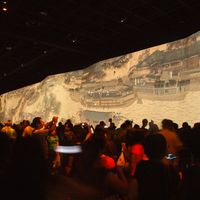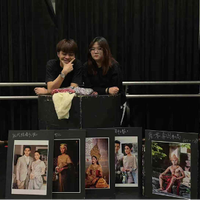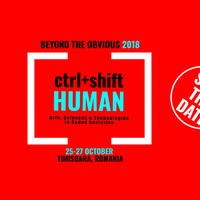On the Potential, Shortcomings, and Other Aspects of Writing with Artificial Intelligence
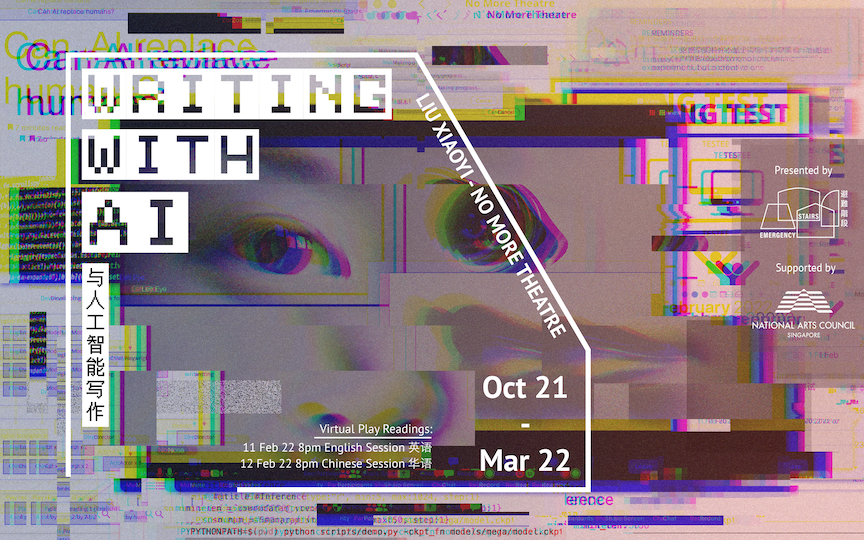
What are the boundaries of human and computer intelligence? What are the limits of artificial intelligence (AI) models? What are the limits of human thought? What even defines human thought? How does one demonstrate understanding? Liu Xiaoyi explores the potential, shortcomings and other aspects of writing with AI in this article.
What Impact Does Artificial Intelligence Have on Creativity?
To address this question, I launched two rounds of "Writing with Artificial Intelligence" research in 2018 and 2021 with the support of the National Arts Council in Singapore.
In the second round of research, I established a creative framework and invited four human writers to each create a script, while I used artificial intelligence (AI) models to create scripts based on the same premise. I then put together these eight scripts for a table read, during which neither the actors nor the audience knew which scripts were created by humans and which were created by AI. Afterwards, the audience and actors voted and held a discussion on AI writing.
If you are familiar with the history of AI, you can see that this research borrowed the concept of the Turing test. The Turing test, proposed by Alan Turing, tests whether a machine can exhibit human-like intelligence. In the test, a tester interacts with both a human and a machine, and if the machine can deceive the tester into believing it is human more than 30% of the time, it is considered to possess human-like intelligence.
Of course, passing the Turing test is not the ultimate goal for artists and artistic creation. What interests me more is how AI will impact human creativity. Will humans be able to collaborate more deeply with new technology? How can artistic creations challenge the boundaries of technology?
The Potential of AI Scriptwriting
 |  |  |
1. The Potential of AI Scriptwriting © Liu Xiaoyi
Recently, ChatGPT and other new models have caused a sensation, leaving many in awe of the advances in AI technology. Indeed, in the realm of writing, AI possesses a potential unmatched by humans.
Firstly, there is the matter of data reserves. AI models are trained through vast amounts of data, including literary works, providing their databases with an extensive reserve of writing styles and models. This level of reserve is a memory capacity that no ordinary person can hope to obtain in their lifetime.
Secondly, there is the matter of associative abilities, or more accurately, predictions based on data. Biologist Jerome Lettvin proposed a famous theory of Grandmother Cells, stating that there exists in the human brain a neuron or group of neurons that activate when certain specific concepts, such as the image of one's grandmother, appear, thus producing related concepts. This type of thinking is known as association psychology. Given that AI possesses a memory capacity unmatched by humans, its associative possibilities far exceed those of humans.
There is also what I refer to as "non-intentionality." Creative intention is an important issue in meaning creation and interpretation of works. Nearly all creative activity of creators is a purposeful and motivated act. Traditional literary theory places great importance on intention in literary meaning generation and interpretation. It begins with creative psychology, regarding intention as a preconceived notion or purpose preceding the creation of the work. However, its limitations are also very apparent: intentionality can limit creative possibilities, making creativity "theme-driven." Achieving a certain degree of "non-intentionality" is the optimal state that many artists strive to achieve.
Does AI have creative intentions? If its creation is based solely on data reserves and generates random content through computation and association, AI's creativity may be even more inclined towards non-intentionality than that of human creators. This type of non-intentionality is precisely what stimulates creative thinking.
The Shortcomings of AI Scriptwriting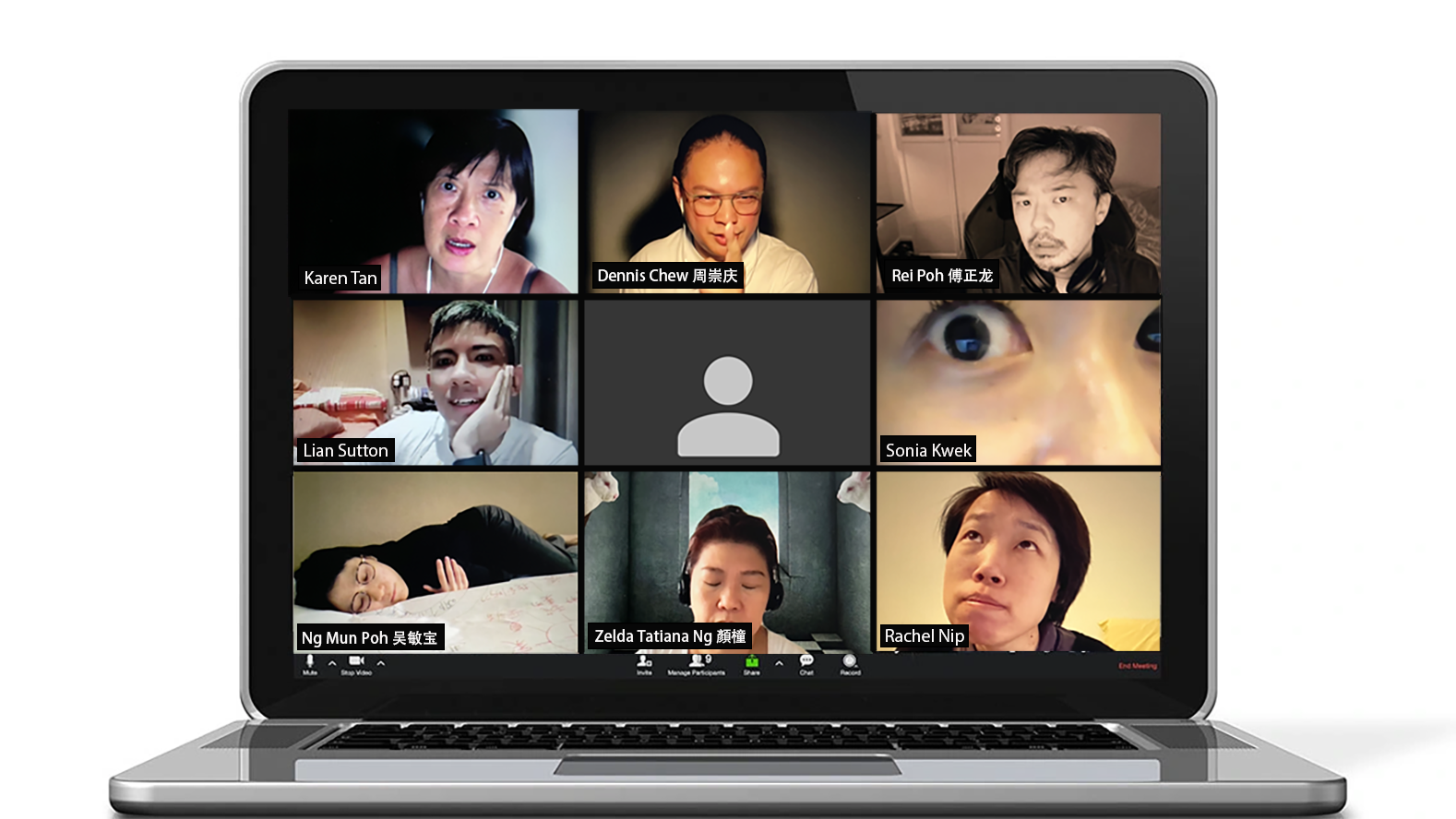
2. Online Rehearsal for "Writing with AI" - The research was conducted between 2021 and 2022, with performers reading scripts online. The scripts were written by four writers and four authors who used an artificial intelligence (AI) model to create the scripts based on the same prompts. © Liu Xiaoyi
Scriptwriting is a process of creative writing, which in some ways, is a process of anti-system and extreme individuality. Therefore, it may be a false proposition to try to program the creative process of writing. The road for AI to carry out scriptwriting may still be a long one.
Firstly, there is a need for understanding the artistic form. For scriptwriting, in particular, a thorough understanding of the dramatic vocabulary such as characters, dramatic actions, events, and conflicts is necessary for traditional plot writing. Currently available AI models do not possess a comprehensive understanding of this. If it involves theatrical performances, AI even requires a deep understanding of spatial structure and its application, and in the case of TV and film, AI also needs to understand more about camera language.
Secondly, the structure is essential. Traditional plot writing requires a strong control over the overall structure, and the development, direction, and changes in the plot are very complex. It remains a challenge whether AI can well connect the context, make the plot form a complete cycle, and this is still an unsolved problem.
Based on the above two points, AI is currently unable to complete a "qualified" scriptwriting independently. In my experiment, researchers and audiences repeatedly pointed out that compared to scripts written by human playwrights, AI scripts appear "incoherent". It still relies on the cooperation of human scriptwriters, or human scriptwriters can use AI to assist in their creation. In other words, the key phrase in the issue of "Writing with Artificial Intelligence" is not "artificial intelligence" or "writing," but "with".
The Advantages of Human Writing
So, what are the advantages of human creators over AI in writing?
Firstly, the establishment of a symbol system. Compared to AI's "non-intentionality" in creation, human creators are clearly conscious and intentional in their creative process - to some extent, it is the establishment of a symbol system. AI's selection of elements is based on data rather than literary quality. In contrast, human scriptwriters are better able to consider the potential and space for symbol interpretation when selecting elements, which is often strategic, more rational, logical, and coherent.
Secondly, the ability of self-reflection. Human scriptwriters can read their own writing, generate criticism, and make modifications; or listen to others' opinions and suggestions, filter and absorb them. Moreover, humans can create works with "meta" settings, such as writing a play about scriptwriting. Can AI create reflective plays? There is currently no answer. But human reflection and ability is what constantly drives us to progress and develop.
Thirdly, involvement of other elements. Human scriptwriters can have a more comprehensive understanding of artistic forms, consider more effects of script presentation, and the integration with other elements. In contrast, scripts written by AI tend to lean towards literary texts. Although AI models can understand other elements with appropriate guidance, it is unlike humans who can have real experience with theatre or film operations, so it's only paper talk.
Lastly, as long as there is data, there is a data center; and as long as there is a data center, there is an ideological and capitalistic composition behind it. In my workshop, a student discovered that the dialogue written by AI was "very Hollywood" - we can infer from this that certain AI models have a certain data composition behind them. Whereas humans are diverse, and human self-awareness can bring us possibilities for reflection.
Conclusion
Art has always responded to the era and society we live in, including the technological developments of this era. The invention of electricity has changed the creation and form of theatre, and the invention of the Internet has once changed the research and creation of creators. Technology is always gradually influencing how we think, live, move, and create.
Perhaps technology and art are expanding the boundaries of human creativity in this game.
Cover Image: Writing with AI by Liu Xiaoyi © Photo: Liu Xiaoyi
About the Author
Liu Xiaoyi is considered one of the most promising figures at the forefront of the experimental theatre and cultural exchange network in Asia. He was the recipient of the Young Artist Award by the National Arts Council of Singapore in 2016. The artistic director of Emergency Stairs (Singapore) and the artist-in-residence at Zuni Icosahedron (Hong Kong), he has been involved in over 70 theatrical works in various capacities, such as curator, director, playwright, and actor over the past two decades. Since 2017, he has served as the artistic director of the cross-cultural arts festival Southernmost. In 2020, he established the international cultural leadership development platform Emergency Academy.
Similar content
deadline
01 Sep 2017
deadline
06 Aug 2021
from - to
25 Oct 2018 - 27 Oct 2018
deadline
30 Apr 2019

